Q
What's the Maintenance Cost of Honda City Hatchback? Better Look at Here First!
The regular maintenance cost of the Honda City Hatchback ranges from RM300 to RM500 (depending on different service centers). Generally, basic maintenance is required every 6 months or every 10,000 kilometers, which mainly includes the replacement of consumables such as engine oil and oil filters. If you choose fully synthetic engine oil or need to additionally replace items like the air filter and air - conditioning filter, the cost may increase to around RM600 - RM800. The maintenance cost of the e:HEV hybrid version may be slightly higher due to the battery system and special maintenance procedures, but the difference is not significant. It is recommended that car owners follow the maintenance schedule recommended by Honda (specific details can be found in the maintenance manual provided with the vehicle). At the same time, booking services through the Honda Malaysia official website or the MyHonda APP can ensure transparent and standardized charges. Authorized dealers in different regions may offer seasonal discounts or maintenance packages, so it's more accurate to consult them directly.
Special Disclaimer: This content is published by users and does not represent the views or position of PCauto.
Related Q&A
Q
What's the Reslae Value of Honda City Hatchback?
The resale value of the Honda City Hatchback is influenced by multiple factors, including the vehicle's age, condition, mileage, market demand, and configuration version. Generally speaking, Honda models have an above - average resale rate in the local market.
Take the City Hatchback launched in 2021 as an example. The new car price of the entry - level 1.5 S is about RM75,000. After three years of use, the second - hand price is approximately between RM55,000 and RM60,000 (depending on the vehicle's condition), which means it retains about 70% - 75% of its original value. If you choose the higher - spec V or RS versions, the residual value may be slightly higher, but it is also affected by mileage and maintenance records.
The Honda brand is quite popular in the Malaysian second - hand car market, especially the City series with a vehicle age of less than five years. Due to its fuel economy and reliability, there is a consistent demand for them. It is recommended that before selling your car, you ensure regular maintenance, keep a complete maintenance record, and refer to the recent transaction prices of the same model to get a more reasonable second - hand valuation. However, the actual price still depends on market fluctuations and the buyer's bargaining situation.
Q
What's the Engine Displacement of Honda City Hatchback?
The Honda City is available in both gasoline and gasoline hybrid (HEV, MHEV) versions. All models are equipped with an engine with a displacement of 1498cc, which is equivalent to 1.5 liters. This engine size strikes a balance between power and fuel efficiency, making it suitable for daily commuting and various driving needs.
The 1498cc gasoline engine can deliver a maximum power of 121 horsepower and a peak torque of 145 Nm. It is paired with a Continuously Variable Transmission (CVT) that enables smooth gear shifts.
In the gasoline hybrid RS e:HEV model, the 1498cc engine works together with an electric motor. The engine has a maximum power of 98 horsepower and a torque of 127 Nm, while the electric motor provides an additional 109 horsepower and 253 Nm of torque. The combined power output offers better acceleration performance.
Q
What Engine Is Equipped by Honda City Hatchback?
The two - door version of the Honda Fit offers different engine options. Some models are equipped with a 1.5 - liter naturally aspirated gasoline engine, with a naturally aspirated (NA) intake system. The engine has a displacement of 1,498 cc, generating a maximum power of 89 kW at 6,600 rpm and a peak torque of 145 Nm at 4,300 rpm, with a maximum horsepower of 121 hp. The vehicle is also equipped with a continuously variable transmission (CVT).
There is also the RS e:HEV model. It is equipped with a 1.5 - liter gasoline engine and a hybrid system. The engine itself can produce a maximum power of 72 kW at 5,600 - 6,400 rpm and a torque of 127 Nm at 4,500 - 5,000 rpm, with a maximum horsepower of 98 hp. The electric motor can provide a total power of 80 kW, a torque of 253 Nm, and a maximum horsepower of 109 hp. The battery type is a lithium - iron phosphate battery with a capacity of 1.3 kWh, and it uses an electronic continuously variable transmission (E - CVT). These engines strike a balance between performance and fuel economy to meet various driving needs.
Q
What's the Type of Honda City Hatchback's Gearbox?
The type of the Honda City's gearbox varies depending on the model and its powertrain. For gasoline-powered models, the transmission type is CVT (Continuously Variable Transmission), providing a smooth driving experience by continuously adjusting the gear ratio, which helps optimize fuel efficiency and power output according to different driving conditions.
For hybrid models like the Honda City RS e:HEV, it is equipped with an E-CVT (Electronically Controlled Continuously Variable Transmission). The E-CVT is specifically designed for hybrid vehicles. It coordinates the power output between the engine and the electric motor, allowing smooth switching between different driving modes such as pure electric drive, engine drive, and hybrid drive, thereby enhancing the overall efficiency and performance of the hybrid system.
Q
What's the PCD Size of Honda City Hatchback?
The PCD (Pitch Circle Diameter) of the Honda City Hatchback is 5x114.3, which means the wheel's bolt holes are arranged in a circle with a diameter of 114.3 mm and consist of 5 bolt holes. This specification is the same as that of the Honda Jazz, certain City Sedan variants, and some mainstream Japanese models in the Malaysian market (such as the Toyota Vios and Nissan Almera), providing ample options for wheel upgrades or replacements.
When changing wheels or tires, owners should not only consider the PCD but also ensure compatibility with the center bore (CB) size, offset, and tire specifications to maintain safety and handling stability. If upgrading to larger or more customized wheels, it is advisable to consult a professional tire shop or an authorized Honda service center to avoid purchasing unsuitable rims that could compromise driving safety.
Q
Does Honda City Hatchback Support Apple Carplay?
The Honda City is equipped with Apple CarPlay. The all-new 2024 Honda Fit hatchback has been launched in Malaysia. The vehicle features an 8-inch multimedia touchscreen on the center console, which supports wireless connection with Apple CarPlay and Android Auto, allowing users to connect their iPhones to the car's infotainment system. Once connected, drivers can directly access various functions of their iPhones, such as navigation, music playback, making calls, and sending text messages, through the car's touchscreen or voice control. By integrating the familiar iPhone interface with the vehicle system, it enhances the in-car experience. This is a very convenient feature for those who rely on their iPhones for various daily tasks and want to achieve seamless connectivity while driving.
Q
What's the Brand of Honda City Hatchback's Tire?
The factory-fitted Honda City Hatchback in the Malaysian market is primarily equipped with Yokohama's BluEarth-GT series tires (specifically 185/55 R16 or 185/60 R15, depending on the variant). These tires emphasize fuel efficiency, durability, and wet-road safety, aligning with the City Hatchback's positioning as an economical family car. However, depending on the production year or promotional packages, some vehicles may be equipped with tires of other brands such as Dunlop or Bridgestone. The exact tire model should be verified based on the factory configuration at the time of purchase.
For owners looking to replace their tires, other brands in the same specification—such as Michelin Energy XM2+ or Continental CC6—can be considered. These are popular energy-saving and comfort-oriented tire options in the Malaysian market, offering a balance between fuel efficiency and quiet performance. Regular checks on tire wear and pressure are recommended, along with adhering to the manufacturer's suggested replacement intervals to ensure driving safety.
Q
Is Honda City Hatchback a Good Car? Learn the Pros and Cons Here
The Honda City Hatchback has many advantages and is a great car. In terms of appearance, it features a delicate, stylish, and sporty design. For instance, some models are equipped with a honeycomb radiator grille and an added rear spoiler. The RS version also has unique trim panels and side skirts, making it highly recognizable. The interior details have been optimized. The RS version has an all - black interior. In some models, the instrument panel has been upgraded to a 4.2 - inch TFT color screen. The central control touch - screen host is 8 inches, and the pixels of the rear - view camera have been improved.
In terms of safety and intelligent assistance, the entire vehicle lineup comes standard with multiple safety systems, such as ABS anti - lock braking, vehicle stability control, lane departure warning, and autonomous emergency braking. There's also an ISO FIX child seat interface. Some models are equipped with the Honda Sensing function, providing comprehensive protection for the driver. Additionally, some models have added practical features like wireless CarPlay and a wireless charging panel.
In terms of power, there are multiple options. The 1.5L naturally aspirated engine paired with a CVT transmission offers a smooth power output, which is sufficient for daily driving. The hybrid system in the e:HEV RS model delivers excellent power and has relatively low fuel consumption. However, it also has some drawbacks. For example, the rear brakes of some models are drum brakes, which are slightly inferior to disc brakes in terms of braking performance. The rear - seat space may feel a bit cramped for taller passengers. Overall, the Honda City Hatchback performs well in terms of appearance, safety, and power, and can meet the daily needs of most users.
Q
What's the Width of Honda City Hatchback?
The Honda City has a width of 1,748 millimeters. This B-segment hatchback offers a comfortable interior space for passengers, and its width helps create a spacious cockpit, providing sufficient shoulder room for both front and rear passengers and enhancing the overall comfort during the drive. Whether it's a short trip around the city or a long-distance journey, this width ensures a more enjoyable driving and riding experience. Moreover, the vehicle's width also plays a certain role in its overall stability and handling on the road.
Q
What's the Road Tax of Honda City Hatchback? How to Calculate It?
The Honda City Hatchback provides petrol and hybrid versions, and the road tax calculation methods vary for different versions. For the petrol version, since its displacement is 1498cc, which is less than 1800cc, according to regulations, it is required to pay 75% excise duty. The specific amount of road tax needs to be comprehensively calculated in combination with the actual value of the vehicle and other factors. Generally speaking, the road tax price to be paid is calculated by multiplying the vehicle value by the 75% excise duty rate and then adding other possible tax items (such as the normal 10% sales tax, which has been waived during the current pandemic).
As for the hybrid version, currently all electric vehicles (including hybrids) registered in Malaysia are exempt from road tax. The tax - exemption period will expire at the end of 2025. Starting from January 1st, 2026, a new policy will be implemented. The road - use tax rate for electric vehicles will be divided into different levels according to engine power: for vehicles with an engine power below 100kW, for every additional 10kW of power, the tax increases by 10 ringgit; for vehicles with an engine power between 100kW and 210kW, for every additional 10kW of power, the tax increases by 20 ringgit; for electric vehicles with an engine power between 210kW (excluding 210kW) and 310kW, for every additional 10kW of power, the tax increases by 30 ringgit. Therefore, the road tax for the Honda City Hatchback hybrid version after 2026 needs to be calculated based on its specific engine power.
Latest Q&A
Q
What is the fuel consumption of GLC 2024?
The 2024 Mercedes-Benz GLC performs excellently in fuel economy. The specific fuel consumption data varies depending on the model and drivetrain. The fuel consumption of the GLC 200 is approximately 6.0-6.5 liters per 100 kilometers, while that of the GLC 300 is around 6.5-7.0 liters per 100 kilometers. The actual fuel consumption may vary due to factors such as driving habits, road conditions, and vehicle load.
The 2024 GLC is equipped with an efficient 2.0-liter turbocharged engine and a 48V mild - hybrid system, which further optimizes fuel efficiency and provides smooth power output. For Malaysian consumers, the fuel consumption performance of the GLC is very suitable for both city commuting and long-distance driving. Especially when fuel prices fluctuate greatly, its energy-saving performance is particularly important.
In addition, regular maintenance and proper use of driving modes (such as the Eco mode) can also help reduce fuel consumption. It is recommended that owners refer to the official manual to achieve the best fuel economy. If you have higher requirements for fuel consumption, you can also consider the plug-in hybrid version of the GLC, which can further reduce fuel consumption in pure-electric mode.
Q
How many miles can a GLC 2024 go on a full tank?
According to the official data of the 2024 Mercedes-Benz GLC, its fuel tank capacity is approximately 60 liters. The specific cruising range depends on driving habits and road conditions. Under combined driving conditions, it can travel about 600 to 700 kilometers, which is equivalent to about 373 to 435 miles. This vehicle is equipped with an efficient turbocharged engine and advanced energy - saving technologies, such as a 48V mild-hybrid system, which helps to optimize fuel economy and is particularly suitable for the mixed urban and highway driving conditions in Malaysia.
If you want to further extend the cruising range, you can pay attention to smooth acceleration, reduce sudden braking, and regularly maintain the vehicle, such as keeping the tire pressure normal and replacing the air filter in time. In addition, the 2024 Mercedes-Benz GLC also offers a variety of driving modes, such as the Eco mode, which can help reduce fuel consumption and is suitable for long-distance driving or congested roads. For users in Malaysia, the cruising performance of this car can fully meet the needs of daily commuting and weekend outings, while also combining luxury and practicality.
Q
Is GLC 2024 a safe car?
The 2024 Mercedes-Benz GLC performs excellently in terms of safety. It is equipped with a number of advanced safety technologies, including active brake assist, lane-keeping assist, blind-spot monitoring, and adaptive cruise control. These features can effectively reduce the risk of accidents and enhance driving safety. In addition, the 2024 GLC also adopts a high-strength body structure and multiple airbags, further enhancing its collision protection capabilities.
For consumers in Malaysia, this car is also adapted to local road conditions, such as the hot and rainy climate. Its chassis tuning and electronic stability system have also been optimized to ensure a stable driving experience on various road conditions.
If you are particularly concerned about the safety performance of cars, you can also learn about the safety configurations of similar models from other brands, such as the Volvo XC60 or the BMW X3. They also perform well in terms of safety.
Overall, the 2024 GLC is a reliable and safe vehicle, suitable for Malaysian family users who value safety and comfort.
Q
What is the maintenance cost of Mercedes GLC 2024?
The maintenance cost of the 2024 Mercedes-Benz GLC in Malaysia depends on the model (such as GLC 200, GLC 300, or AMG versions) and the selected maintenance package. It's generally recommended to perform basic maintenance every 10,000 kilometers or 12 months. The cost of basic maintenance is approximately between RM1,500 and RM2,500, which includes oil and filter changes and basic inspections. For major maintenance (such as at 40,000 or 60,000 kilometers), the cost may reach RM4,000 to RM6,000, involving the replacement of transmission fluid, brake fluid, etc.
In addition, the "Service Package" provided by Mercedes-Benz can be pre-purchased, which can save about 10% - 15% of long-term maintenance expenses. In Malaysia, the maintenance cost of luxury cars is generally high, but Mercedes-Benz has an extensive after-sales service network covering major cities like Kuala Lumpur and Penang, ensuring that car owners can get professional support.
It's worth noting that the replacement costs of vulnerable parts such as tires and brake pads are not included in the above costs. It is recommended that car owners conduct regular inspections to extend the service life of the parts. If you choose a third-party repair shop, the cost may be lower, but make sure they use original-certified parts to avoid warranty disputes. The maintenance cost of the Mercedes-Benz GLC is in line with its high-end positioning, but good maintenance habits can effectively reduce the long-term cost of car use.
Q
How to connect phone to Haval H2 2019?
To connect your phone to the 2019 Haval H2, first make sure the vehicle's infotainment system is turned on. Then, you can connect via a USB cable or Bluetooth. If you use a USB cable, plug your phone into the USB port on the center console. The system will automatically recognize it and prompt you to complete the connection. Some models may require you to enable the USB debugging mode on your phone.
If you're using Bluetooth, go to the "Settings" menu in the in - car system, select "Bluetooth" and turn on the search function. At the same time, turn on Bluetooth on your phone and select "Haval H2" to pair. Once the pairing is successful, you can use the call and music playback functions. It should be noted that there may be slight compatibility differences among different phone models. It is recommended to use the original data cable for optimal stability.
In addition, the in - car system of the Haval H2 also supports the mirror projection function of some phones, such as Android Auto or CarPlay. You can achieve navigation and more app operations by downloading the corresponding apps, which provides convenience for driving.
In the hot climate of Malaysia, it is recommended to regularly check the heat dissipation of in - car electronic devices to avoid performance degradation caused by long - term high - temperature operation. Also, keep the system software updated to get the latest function optimizations.
View MoreRelated News
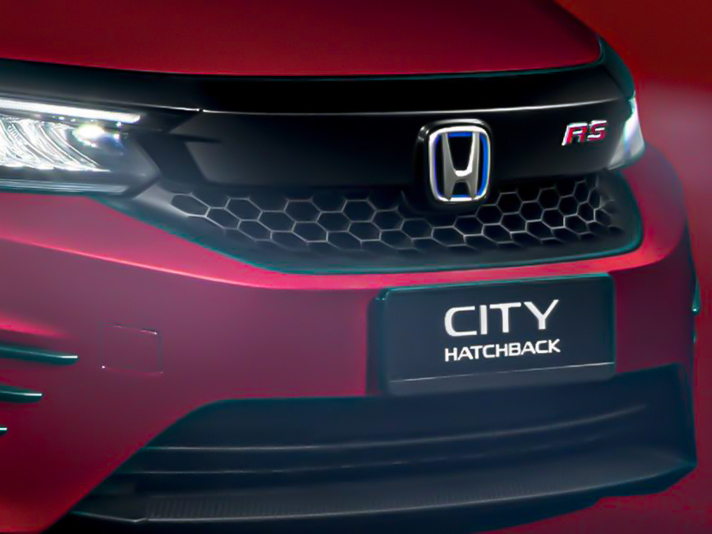
Is Honda City Hatchback Still Worth Buying in 2025?
JohnJun 26, 2025
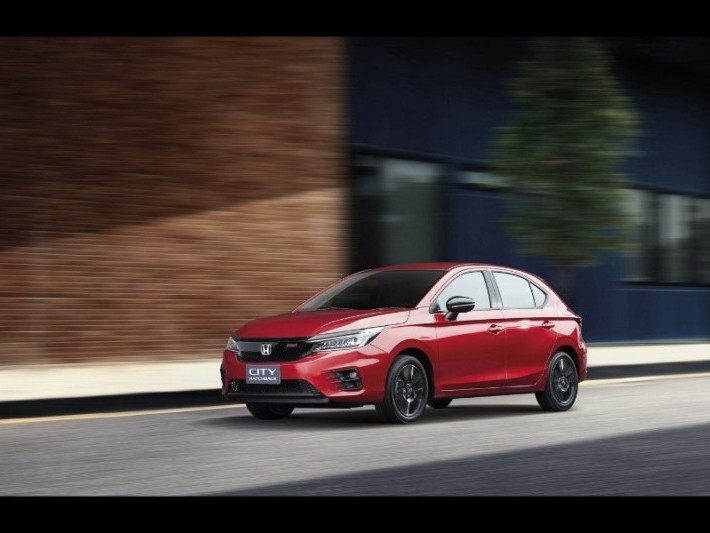
High Cost-Performance: Is the Honda City Hatchback Worth Buying? Dynamic Experience Revealed!
AshleySep 23, 2024
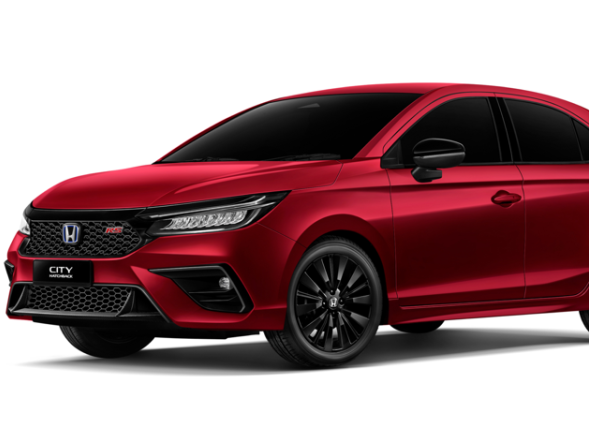
From Jazz to City Hatchback: The Perfect Transformation of Honda Hatchback
LienJun 4, 2024
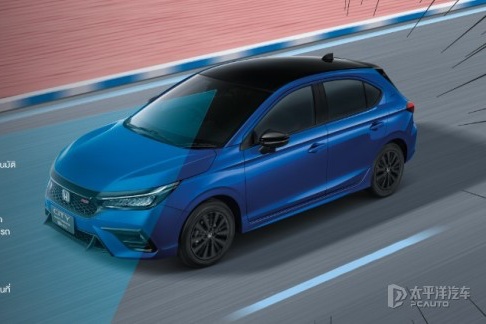
Honda City e HEV Hatchback RS: Fuel Efficiency
AshleyMay 4, 2024

Honda Prelude returns after 24 years, the sixth-generation Prelude will be released in Japan
Kevin WongSep 4, 2025
View More











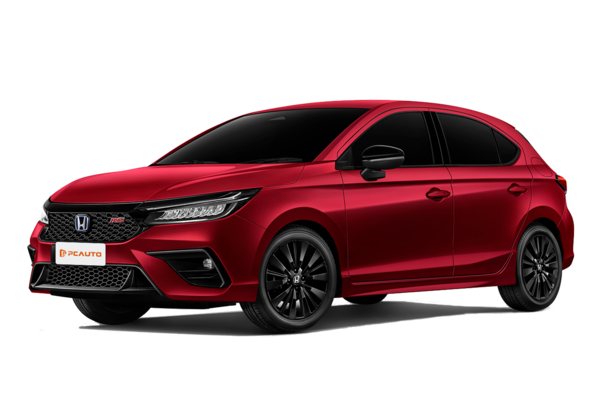
 Cars
Cars




Pros
Cons